Enonsaari

Enonsaari is an island on Enonselkä Basin, Lake Vesijärvi, in Lahti of southern Finland. The island is a quite popular tourist spot in the summer. There is summer time cottages and large 1910 built cottage called Siesta. Also there is a fireplace, shelter, and a café. On weekends in the summer, a small passenger ferry goes from Lahti and from Messilä to Enonsaari. In winter, Enonsaari is a quiet destination for skiers and ice-skaters.
Hailuoto

Hailuoto (Swedish Karlö) is an island and a municipality in Northern Ostrobothnia region, Finland. The population of Hailuoto is 1,016, and the municipality covers an area of 200.53 km2 (77.43 sq mi) (excluding sea areas) of which 1.70 km2 (0.66 sq mi) is inland water (January 1, 2011). Hailuoto is located on an island of the same name opposite the city of Oulu in the Gulf of Bothnia. A ferry operates regularly between Hailuoto and Oulunsalo. In winter an official ice road connects the island to the mainland. Land in the region is constantly rising due to post-glacial rebound. It is estimated that the first parts of Hailuoto appeared from the Baltic Sea about 1700 years ago. The current island of Hailuoto was formed from many smaller islands. Two large sections, Santonen and Hanhinen merged into the main island (Luoto) only about two centuries ago. The island is continuously expanding and eventually it will join with the continent. Kirkkosalmi, a wetland region between Hanhinen and Luoto is renowned for being an important bird refuge where rare bird species are observed.
Houtskär
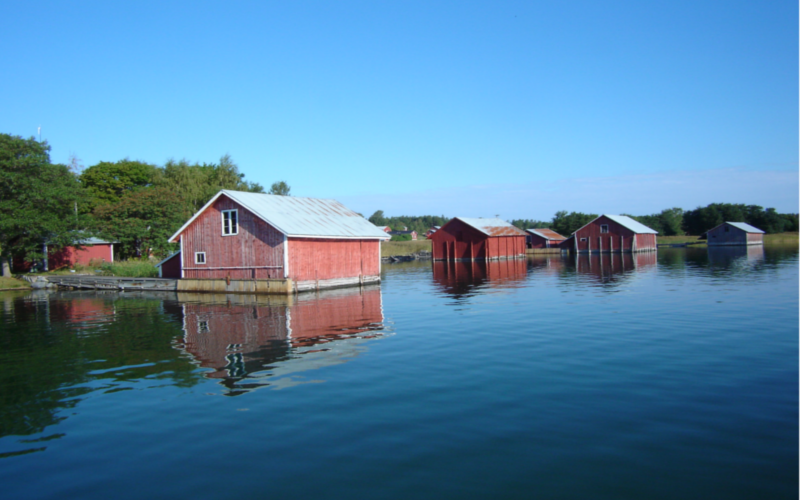
Houtskär (Swedish pronunciation; Finnish: Houtskari is a former municipality of Finland. On 1 January 2009, it was consolidated with Iniö, Korpo, Nagu and Pargas to form the municipality Pargas (briefly named Väståboland). It is located in the Archipelago Sea in the province of Western Finland and is part of the Southwest Finland region. The municipality had a population of 621 (as of 31 December 2008)and covered a land area of 119.93 square kilometres (46.31 sq mi). The population density was 5.18 inhabitants per square kilometre (13.4/sq mi). The municipality was bilingual with the majority (86{ca9f92c70a7a11b84130f29e7bb7b08ab6a48ce73d674aac98ec27c91d1efc14}) being Swedish and minority Finnish speakers. There are three stores in Houtskär, a bank and post office, and the church of Santa Maria in Näsby center. At various times throughout the year dances, accompanied by live music, are held which are an old tradition kept alive by both older and younger participants who dance in a variety of styles. Houtskär consists of a group of bigger islands and a large number of smaller islands in the surrounding sea area. Communications to the mainland is by the ”Archipelago road” through Pargas, Nagu and Korpo, with three ferries considered part of the road network, the trip with the last one from Korpo to Houtskär lasting half an hour. The main islands are connected by bridges or cable ferries, the outer inhabited islands usually have daily connections with ship-like ferries.
Jurmo

Jurmo is an island and a village in the municipality of Korpo in the outer islands of the archipelago off of Turku, Finland. Directly south of the island of Korpo and 13 kilometres (8.1 mi) northeast of the island of Utö, this elongated island is 5 km (3 mi) in length with an average width of 1 km (0.6 mi). The island has had its own church since 1846 and a bird observatory. Although there are dozen or so permanent residents on the island, they are joined by quite a few part-time residents come summertime. The island of Jurmo was formed during the ice age and, as an island surrounded by large amounts of gravel, and not consisting of only rock like most other islands in the region, is actually a distant continuation of the Third Salpausselkä.
Jussarö
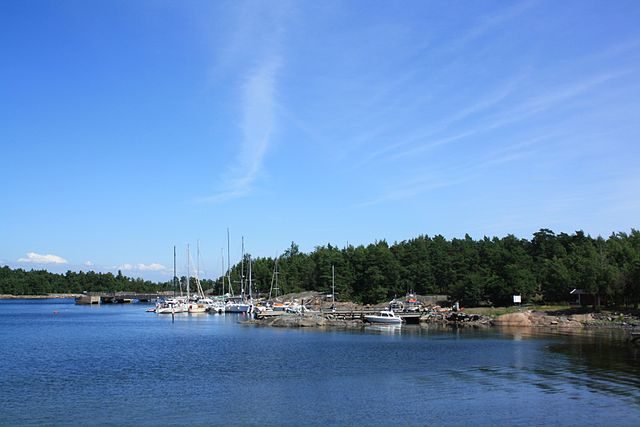
Jussarö (Finnish: Jussaari) is an island in Ekenäs, Raseborg, Finland. Jussarö is known by the Jussarö lighthouse. There is also an iron ore mine, but it was closed in 1967. The iron ore occurrence is the biggest undersea level in Finland. In Jussarö some abandoned buildings still remain; which were used by the military until 2005 for urban war simulations. Jussarö is known as the only ghost town in Finland. Prisoners worked in Jussarö mines in the 19th century. The island also had its own parish.
Kakskerta
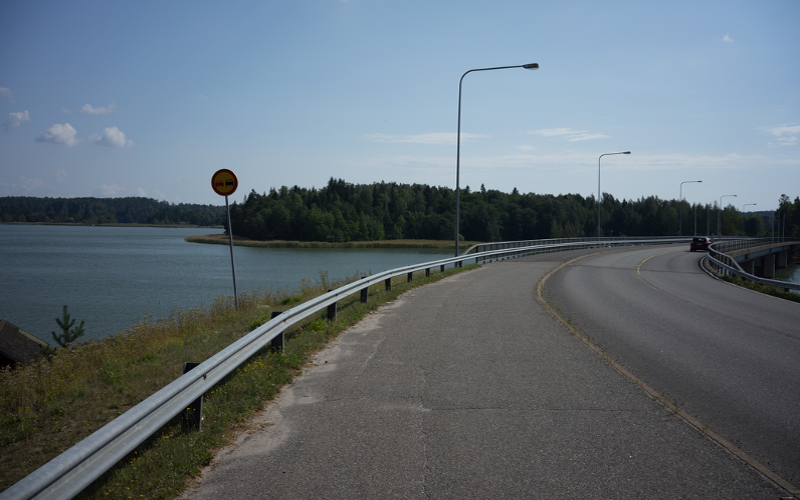
Kakskerta is an island in the Archipelago Sea, south of the city of Turku, Finland. It is a former municipality and a current district of Turku. Like other islands in the Archipelago Sea, it has a large number of summer residences. Lake Kakskerta is located in the middle of the island. The current (as of 2005) population of Kakskerta is 633, and it is increasing at an annual rate of 4.11{ca9f92c70a7a11b84130f29e7bb7b08ab6a48ce73d674aac98ec27c91d1efc14}. 19.43{ca9f92c70a7a11b84130f29e7bb7b08ab6a48ce73d674aac98ec27c91d1efc14} of the district's population are under 15 years old, while 11.85{ca9f92c70a7a11b84130f29e7bb7b08ab6a48ce73d674aac98ec27c91d1efc14} are over 65. The district's linguistic makeup is 94.94{ca9f92c70a7a11b84130f29e7bb7b08ab6a48ce73d674aac98ec27c91d1efc14} Finnish, 4.27{ca9f92c70a7a11b84130f29e7bb7b08ab6a48ce73d674aac98ec27c91d1efc14} Swedish, and 0.79{ca9f92c70a7a11b84130f29e7bb7b08ab6a48ce73d674aac98ec27c91d1efc14} other. There is a stone church on Kakskerta, constructed in the 17th and 18th centuries. The municipality was annexed into the city of Turku in 1968. The Brinkhall manor was the filming location for the historical TV-drama 'Hovimäki'.
Kimitoön
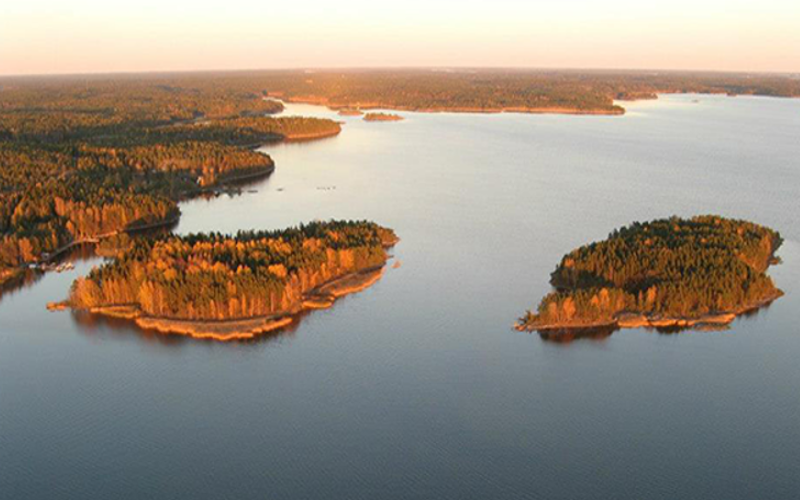
Kimitoön (Finnish: Kemiönsaari) is the largest coastal island of Finland with the area of 524 square kilometres (202 sq mi). It is situated in the Southwest Finland region in Western Finland province. The island has a population of 7,500 divided between the two municipalities: Kimitoön and Salo of which Salo is mostly located on the mainland. The island is bilingual, the majority speaks Swedish.
Kirjurinluoto
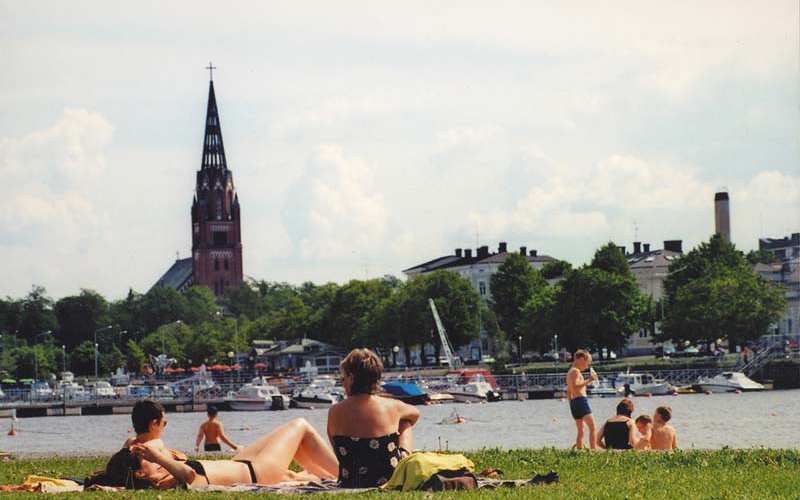
Kirjurinluoto (Swedish: Skrivarsholmen) is an island and a park in the delta of Kokemäenjoki river in the city of Pori in Finland. It is best known for the Kirjurinluoto Arena, an open-air concert park which hosts the annual Pori Jazz festival. Kirjurinluoto is a part of the Pori National Urban Park. At the Kirjurinluoto island are located several facilities like cafés and restaurants, a playground for children, a beach, a miniature golf, a disc golf course and a summer theater. In the latter half of the 19th century Kirjurinluoto island was a recreational area for the wealthy citizens of Pori. The English landscape garden was completed in 1897 by the design of Swedish garden designer Anders Fredrik Rydberg and the Art Nouveau style restaurant in 1910. It was drawn by Finnish architect Torkel Nordman. The first stage for musical events and theater plays was built in 1921. The park was later renovated in the 1930s and 1960s. The first bridge to Kirjurinluoto was opened in 1973, a smaller bridge for pedestrians and cyclists in 2001. A temporary bridge for pedestrian use is opened every summer. A new summer theater has been active in Kirjurinluoto since 2008. Since 1966 Kirjurinluoto has been the main venue for Pori Jazz Festival which is one the largest jazz festivals in Europe. A permanent stage, "Lokki" ("The Seagull"), was completed in 1974. Kirjurinluoto Arena is an open-air concert park for audience up to 80,000. It has been the venue for Pori Jazz Festival since 2004 and for Sonisphere Festival in 2009 and 2010, as well as for some individual happenings. Today the old Lokki-stage hosts smaller events, such as Porispere rock festival. Over the decades, Kirjurinluoto has been a venue for a dozens of international major artists, such as Metallica, Kylie Minogue, Iron Maiden,[6] Elton John, Kanye West, Phil Collins, Carlos Santana and Sting.